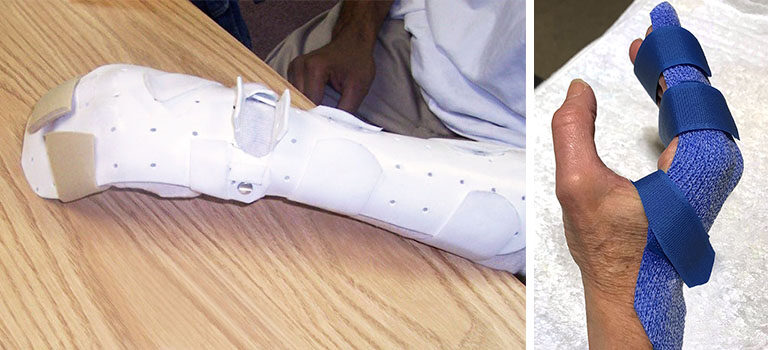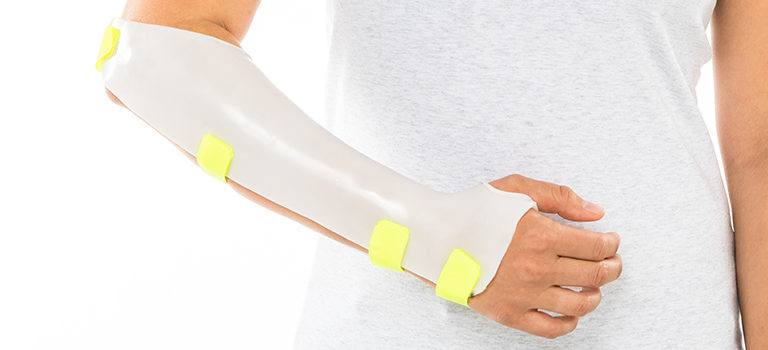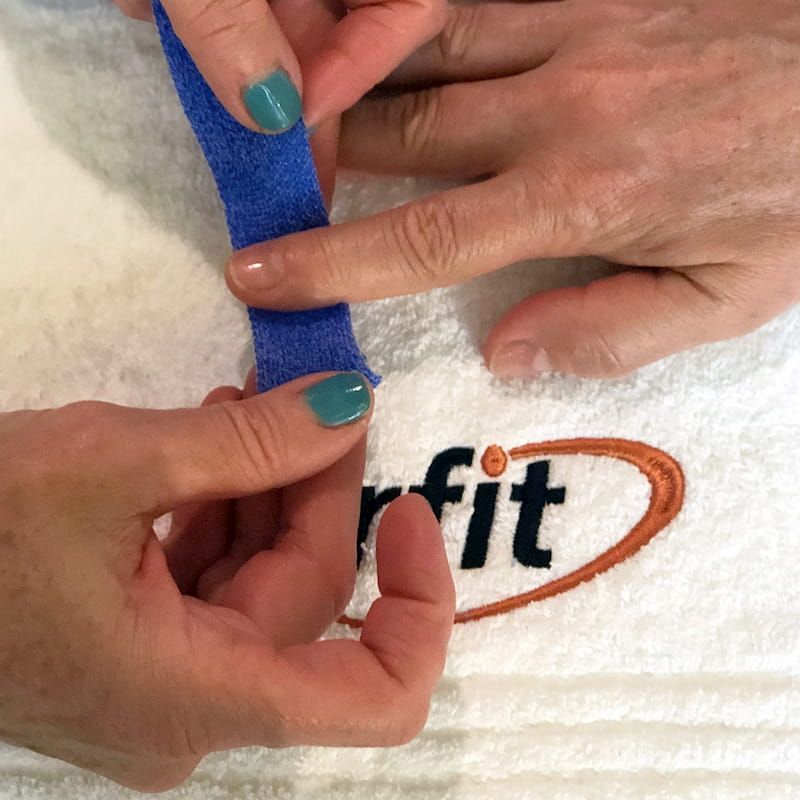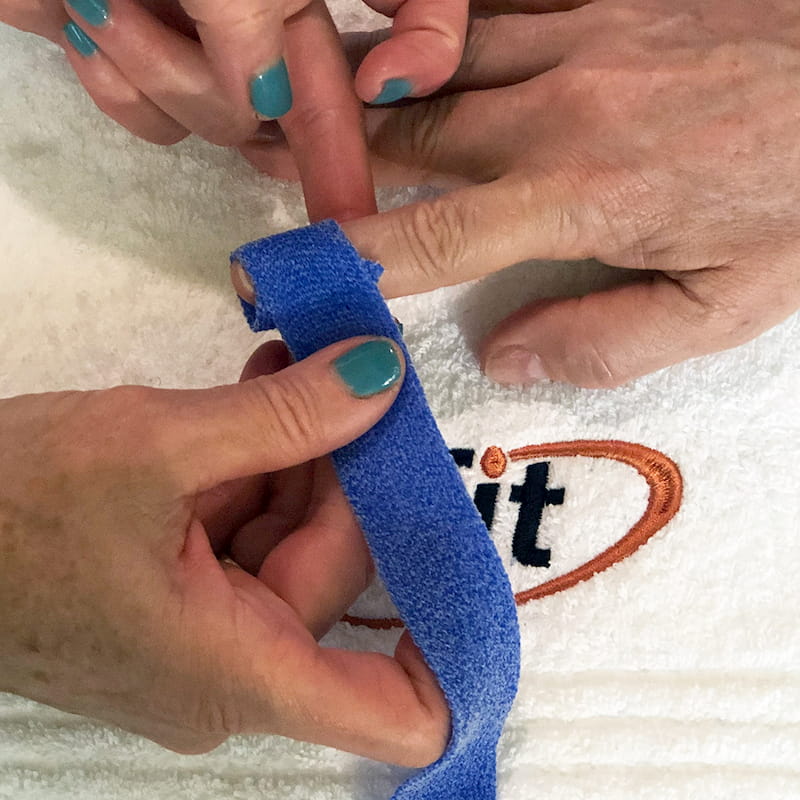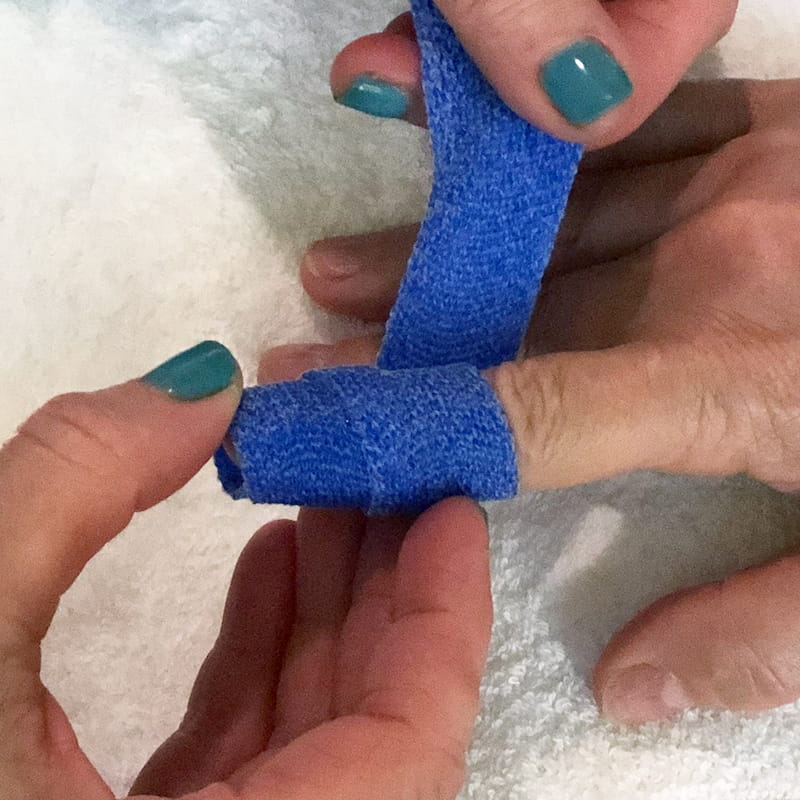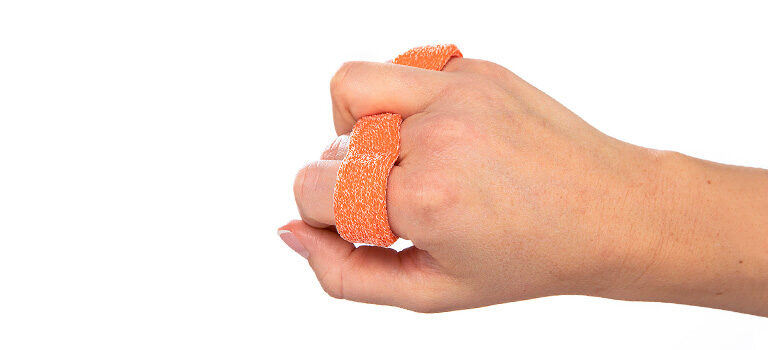
The Orficast Full Finger Wrap
Guidelines and directions for the full finger wrap
The Full Finger Wrap is an easy and versatile orthosis you can make in just a few minutes. It quickly immobilizes the affected digits and places them in a position for healing. It is ideal for all fingers, including the thumb, and toes.
You can use wrap orthosis for a variety of indications, from sprains to fractures, and it is also very suitable for serial casting.
Keep the following tips and directions in mind for the best orthotic fabrication results.
Go straight to the instructional video
How to make a Full Finger Wrap?
We recommend using Orficast 3 cm (1”) for this orthosis. Its tape-like properties make it easy to effectively wrap the material around the affected digit and keep it in place.
Closely follow the directions and take care that you do not make the orthosis too thick or bulky.
Step 1: Take a piece of Orficast 3 cm (1”) about 20-22 cm (8-9”) long. Activate it in hot water and pat dry briefly, maintaining most of the heat.
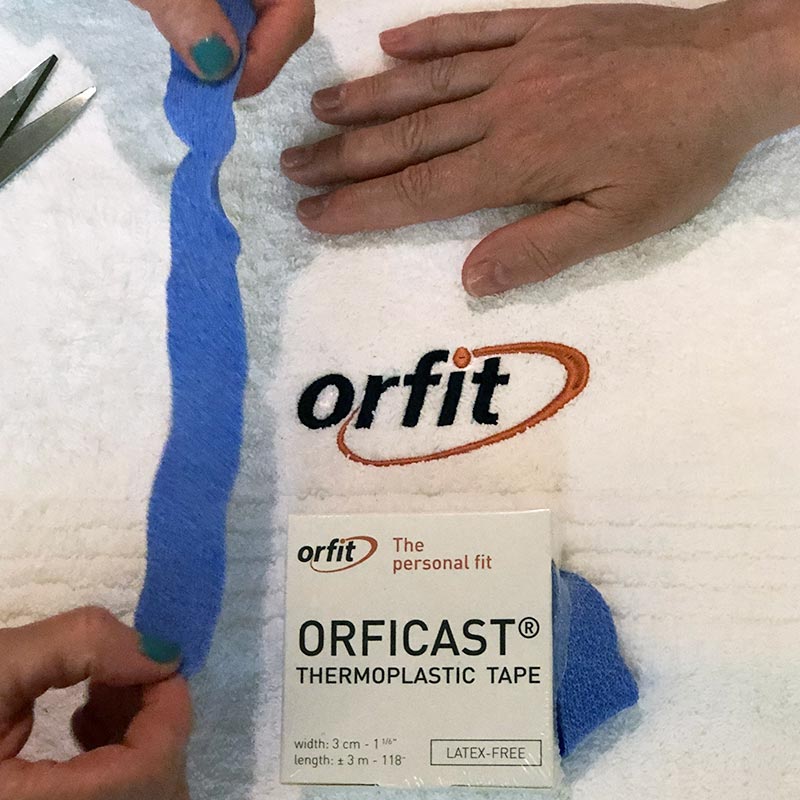
Step 2: Now you can start wrapping the material around the digit. Start distally at the fingertip and anchor the first wrap around to the next layer of material. Wrap at an angle and overlap the previous layer by 50%.
Continue wrapping as you would do with Coban wrap for oedema control. Finish at the web space and secure the corners of the Orficast to the layer underneath.
Step 3: Make sure that the surface of the wrap is smooth. Rub your fingers over the wrapped material to secure all layers together.
Step 4: Now you can place the finger in the desired extended position. Keep the MCP joint flexed and hold the PIP in maximal tolerable end range by holding underneath the distal fingertip. Do not press on the dorsal PIP joint.
You can keep the DIP joint in the orthosis or leave it out.
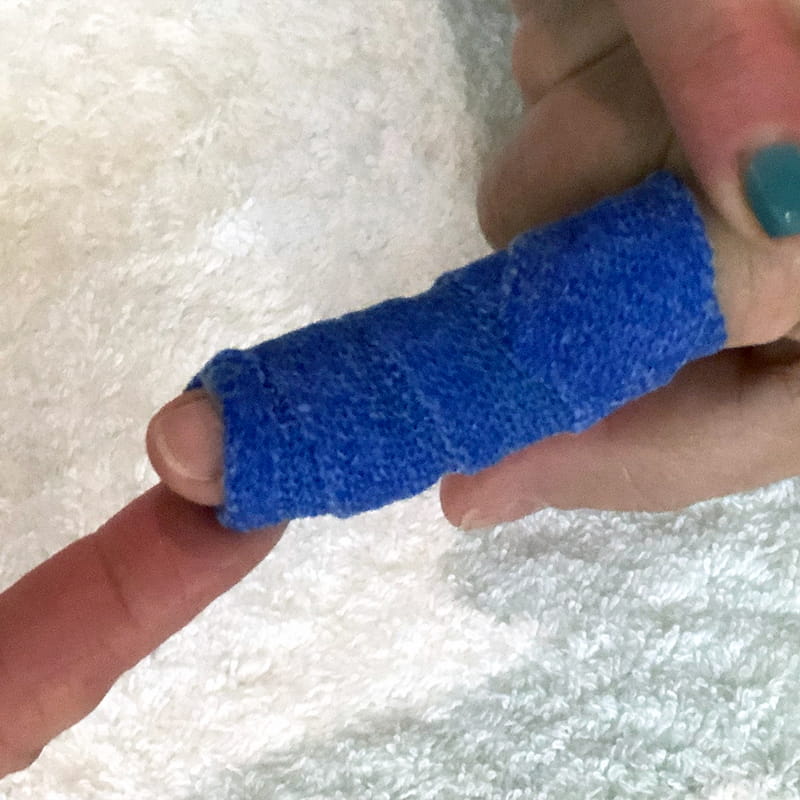
How to use the full finger wrap for serial casting?
Serial static orthoses hold a stiff joint or tight shortened tissue in its end range position to increase passive range of motion or tissue length.
Every few days or even once a week, the therapist removes the orthosis and performs treatment to the stiff or contracted joint. Then they apply a new orthosis to the client in a new end range position.
Removing the orthosis
First, the patient should try and see if they can remove the wrap themselves. Have them tug slightly at the orthosis after it has hardened, and it might just pull off.
If not, the orthosis is easily cut with small curved scissors or plaster scissors down one side. You can have the patient soak the finger in warm water for about 15 minutes, and then try to pull it off. The warm water will loosen the orthosis slightly, but it will not change the shape.
.
Instructional Video
In this video, we explain how to create a full finger wrap that includes the DIP joint:
Questions?
If you have a question or comment, please post it in the Orfit Splinting & Rehabilitation Group on Facebook, or send an email to welcome@orfit.mnvr.be
![]()

Written by Debby Schwartz, OTD, OTR/L, CHT
Physical Rehabilitation Product and Educational Specialist at Orfit Industries America.
Debby is a certified hand therapist with over 36 years of clinical experience. She completed her Doctorate of Occupational Therapy at Rocky Mountain University of Health Professions in 2010. She has worked at Orfit Industries America as Product and Educational Specialist since 2007.
Debby is also an adjunct professor at the Occupational Therapy Department of Touro College in NYC and has written many book chapters in the field of hand therapy and multiple articles for hand therapy journals, including the ASHT Times and the Journal of Hand Therapy. She has published a new textbook on orthotic fabrication together with Dr Katherine Schofield, entitled “Orthotic Design and Fabrication for the Upper Extremity: A Practical Guide”.
![]()
If you’d like to receive the latest product updates and interesting Orfit news, subscribe to our newsletter:

